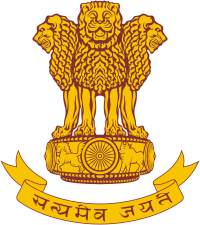The title of this write up ‘Government, Governance and Planning’ was the name of one the elective that I opted for in two my years at the Faculty of Planning and Public Policy at CEPT University, Ahmedabad for my specialization of Environmental Planning. The faculty of this subject, a seasoned senior IAS officer of the Gujarat State cadre, in a rare instance, give me a thorough picture of how the bureaucratic spine of the Civil services in India plays a major role in running the show in a complex country like India and how do the Government and the policies that it puts in place influence and shape up the urban and regional planning process as practiced in India. This, and other related thought processes going around in my mind during the period of 2006-2007 influenced my mind and I was convinced that the only effective way I can participate in the planning process in India was by joining a Government Agency, where the scale of activities is on a macro scale, vis-à-vis working for any private consultant, who usually have to contend with working on micro scales, as compared with the Government, and the subject of policy formation was out of bounds for the latter.
With such a thought process in my mind, I joined a government agency in the state of Gujarat that was working on the JNNURM project, that was on full steam in the hey days of the UPA I government in India, and whatever I learnt during my nearly two and a half stint in the urban development department in Gujarat was a thorough enriching experience. Working under some of the finest brains and administrators in the country, I got a chance to witness firsthand how actually the government machinery acts and this complex structure, even though heavy and inefficient in the majority of cases, began to shed some of its inefficiencies and made attempts to prepare beforehand and give a planned response to any set of events, rather than waking from the slumber, which usually is the case still in most parts of the country, as far as the working of the Government machinery is concerned.
However, the focus of this write up being how the urban and regional planning process is influenced by the Government in the Indian context, and how the interaction between the central, state and the local city administration gives rise to a complex set of dynamics that ultimately manifests itself in the state of the Indian cities and also in the regional planning context, with the planned development of cities like Chandigarh an example of centrally administered behemoth of bureaucracy, while the current development and planning of the DMRC two extreme examples of such complex interactions between the various levels and forms and organizations of the governance in India.
The state of Gujarat, considered as one of the more prosperous regions of the country, and while I still believe that bar is to be set quite higher as Gujarat still has enormous untapped potential to ‘grow’ as is the case with rest of India, the functioning of the state government, under whose purview the urban development department comes, is relatively more progressive, efficient and streamlined that compared with some other large states of India. Back in the days of 2006-2007, the state government in Gujarat had already realized the potential of applications like the Geographical Information Systems (GIS) and looking at this in totality, the thrust that the state government in Gujarat gave to the e-governance in the functioning of the state machinery, has contributed hugely in the smooth functioning of the government.
The various ways in which this has and still is influencing the urban and regional planning scenario in the state of Gujarat is something that has although has left many unanswered questions in my mind, but also has reassured me a bit that at least the policy thrust and certain planning mechanisms to some degree are on the right track in providing an effective and a impactful planning process, that has resulted in Gujarat being a highly urbanized state in India, and also the success of mechanisms such as the town planning schemes and their effective implementation demonstrates the positive effects of the state intervention in important functions such as city planning.
The bureaucratic set up in the Indian context, although much rigid and driven with a huge number of checks and balances, is a robust entity that has the required vitality to spearhead the rejuvenation of India by being the instruments of effective governance and contributing in shaping up of a pro people public policy with thrust on achieving equity and a fair distribution of scarce resources. However, there is an urgent need of reform in the bureaucratic set up in order for it to achieve the above stated objectives. As has been demonstrated in my experience in the Gujarat government, even partially implemented reforms have resulted in a lot of positivity, and a lot more can be achieved if the reformed government machinery makes sincere efforts to make itself relevant to the current trends keeping in mind the social and technological evolution going in tandem with the atmosphere of a changed political leadership in the Indian context.
Image courtesy: http://2.bp.blogspot.com/-hLOhhycHqco/ToGf3mCsu_I/AAAAAAAAAPg/a3gAnkDq4vk/s320/National+Emblem+of+India.gif

 Truth always prevails....
Truth always prevails....
Nice write up but would be much better if you can quote some examples on how things can work differently by implementing e-governance and correlate with other states can help people understand it.
Thanks Piyush. I fully appreciate the value of whatever you have commented. More on follow soon on that front. Thanks and keep posting.